What is Turmeric?
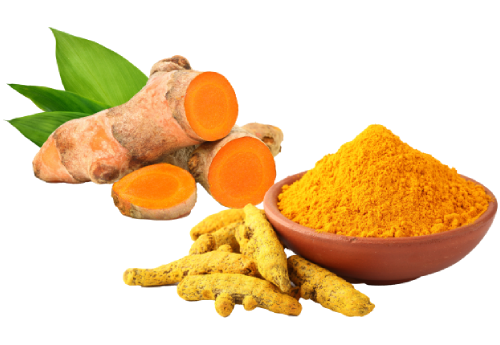
What is the History of Turmeric?

Who Discovered Turmeric and Where did Turmeric Originate?

Marco Polo, the famous explorer, and writer talks about Turmeric in one of his travel accounts dating back to 1280, saying, “it is a vegetable that has all the properties of true saffron…and yet it is not really saffron.”
Where is Turmeric grown?

Refer to the chart below for more insight:
| States (in India) | Production (1000 metric tons) |
|---|---|
| Telangana | 294.56 |
| Maharashtra | 190.09 |
| Tamil Nadu | 116 |
| Gujarat | 78.91 |
| Orissa | 54.5 |
| West Bengal | 45.5 |
What are the other names of Turmeric?

Refer to the chart below for more insight:
| Pharmaceutical name | Rhizoma Curcumae |
| Botanical name | Curcuma domestica Valet., Curcuma rotunda |
| Scientific name | Curcuma longa |
| Family | Zingiberaceae (ginger family) |
| English | Indian saffron |
| Hindi | Haldi, Hardi |
| Amharic | Ird |
| French | Curcuma, Safran des Indes, Terre-mérite, Souchet des Indes |
| German | Curcuma, Kurkuma, Indischer Safran, Gelbwurz |
| Spanish | Curcuma |
| Portuguese | Açafrão |
| Italian | Curcuma |
| Indonesian | Kunyit, Kunir; Daun kunyit (leaves) |
| Sinhala | Kaha |
| Vietnamese | Bột nghệ, Củ nghệ, Nghệ, Uất kim, Khương hoàng |
| Thai | Kha min chan, Khamin luang, Kha min; Wanchakmotluk (C. xanthorrhiza) |
| Punjabi | Haldi, Haldar,Halaj |
| Bengali | Halud |
| Gujarati | Haladar |
| Marathi | Halad |
| Arabian | Kumkum |
| Farsi | Zardchob |
| Telugu | Pasapu, Pasapu Kommulu |
| Tamil | Manjal |
| Kannad | Arishina |
| Malayalam | Manjal |
| Urdu | Haldi, Zard chub |
Who has a Turmeric Patent?
Which Turmeric is Best?
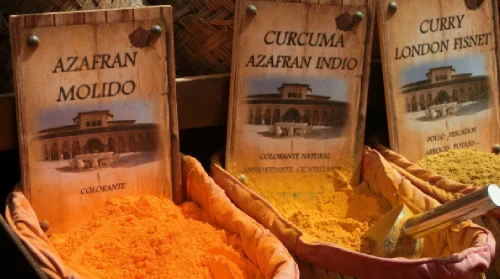
What does Turmeric taste like?

How to grow Turmeric?
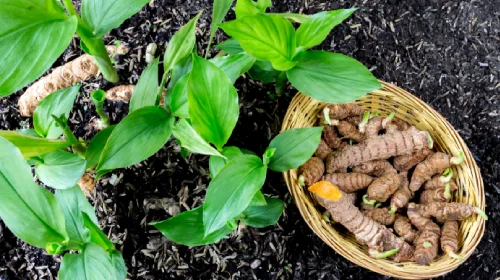
- Carefully select & plant a turmeric rhizome/turmeric root, which is a chunky root-like structure (very similar to ginger)—preferably fresh rhizomes from the local market.
- Consistently monitor and water your rhizome.
- Place your pot in the warmest section of your house.
- Firstly, plant them in smaller pots or planters, and then transfer them outside after 5-7 months before harvesting them.
Turmeric: Where to Buy Fresh?
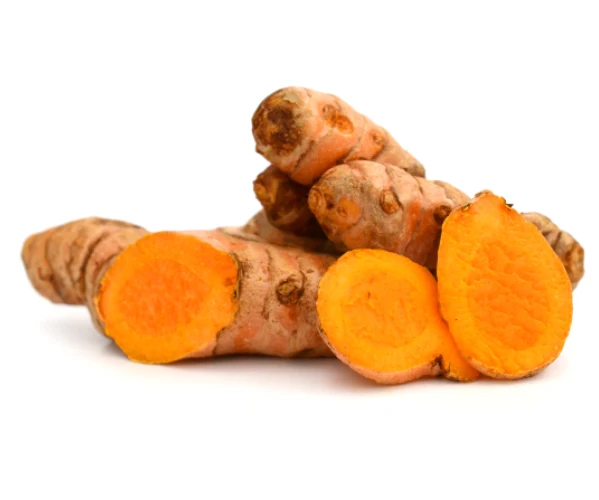
Why should I use Turmeric?
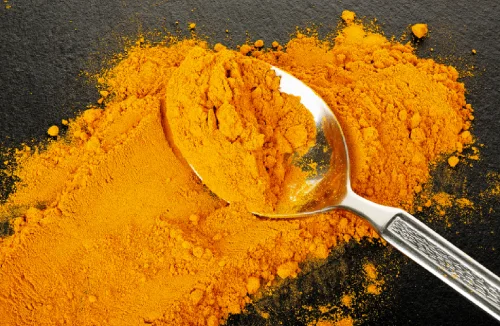
What are the various ways to use Turmeric?
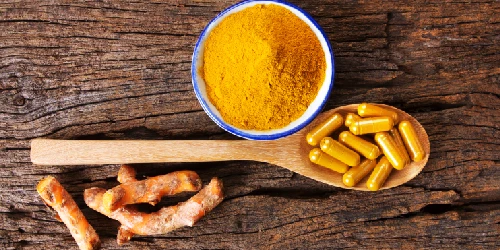
1. Turmeric Powder:
2. Turmeric Juice:
3. Turmeric Tea:
4. Turmeric Milk/Turmeric Latte:
5. Turmeric Essential Oil:
6. Turmeric Face masks:
How Turmeric Powder is Made?
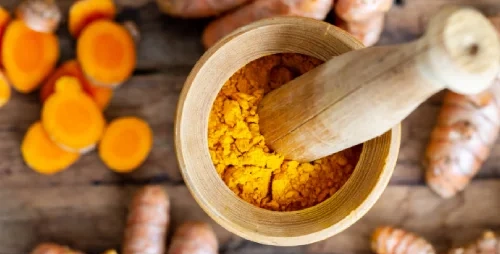
Step 1:
Wash turmeric root thoroughly (repeat if needed).
Step 2:
- Boil water in a pan and then add washed turmeric root.
- Let it simmer for 45 min on low-to-medium flame.
- Wait till froth appears on the surface of the pan.
Step 3:
- Drain the water and let the roots cool down.
- After cooling down, chop the roots into small pieces
- Pat dry the pieces using a kitchen towel or tissues to remove excess water.
Step 4:
- Transfer the pat dried pieces to different plates and let them dry.
- Don’t overcrowd them; place each piece separately.
- Keep them in direct sunlight for about one week.
- If direct sunlight is not available, you can use a well-lit, properly ventilated area.
Step 5:
Step 6:
- Add the dried piece to your grinder and grind till you form a fine powder.
- Once ground well, store the fine, fresh Turmeric powder in an airtight jar.
Why Turmeric is Boiled before Drying?

- It reduces drying time.
- Helps in even distribution of color throughout the rhizome.
- Aids in sterilization of the rhizomes.
- It gives a more attractive (not wrinkled) product.
What is Turmeric Tea good for?
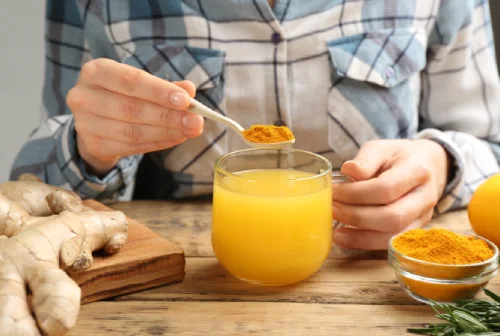
- Promotes weight loss.
- Boosts the Immune system.
- Helps to manage cholesterol levels.
- Works wonders for the skin.
- Works great as a mood booster.
- Relieves the symptoms of Arthritis.
- Good for respiratory health.
- Aids in the prevention of Alzheimer’s disease.
- It may help to prevent cancer.
- Helps in improving inflammatory bowel disease-related symptoms.
Are Turmeric Shots Good for You?
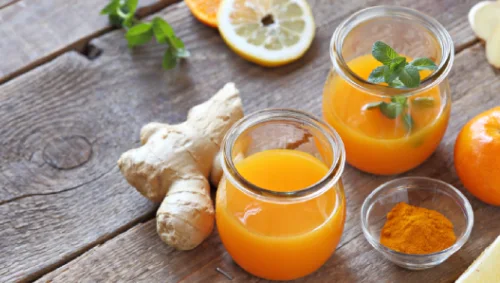
Are Turmeric Lattes good for you?
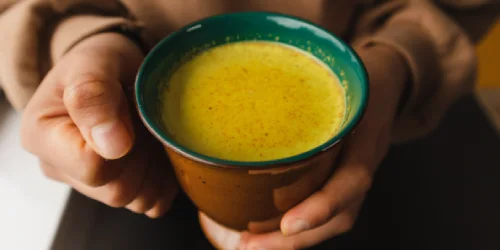
- Helps to treat acne, dark spots for healthy-looking skin.
- Aids in building stronger bones and reducing arthritic and joint pain.
- Helps in removing toxins and works as a natural blood purifier.
- It can help in soothing chest congestion and cough.
- Helps in hormonal imbalance in women that can cause irregular periods, painful cramps.
- It can relieve heartburn, bloating, and acid reflux.
- Helps in maintaining better immunity.
- It aids in lessening the symptoms of depression, like sleeplessness and anxiety.
What are some recipes one can make using Turmeric?
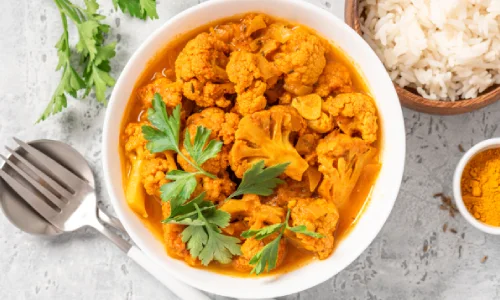
1. Soup
- Yellow Mung Dal Soup
- Red Lentils Soup
- Ginger & Turmeric Carrot Soup
- Detox Turmeric Lentil Soup

2. Curry
- Green Coconut Curry Lentil Soup
- Slow Cooker Coconut Quinoa Curry
- Slow Cooker Moroccan Chickpea Stew
Will Turmeric Break my Fast?

How much Turmeric should you consume per day?
- Turmeric Powder – ¼ or ½ teaspoon twice a day or as advised by the doctor.
- Turmeric Juice – 2-3 teaspoons per day or as defined by the doctor.
- Turmeric Capsule – 1 capsule twice a day or as prescribed by the doctor.
- Turmeric Paste – 1/2 -1 teaspoon or as per your requirement Turmeric Oil – 2-5 drops or as per your requirement.
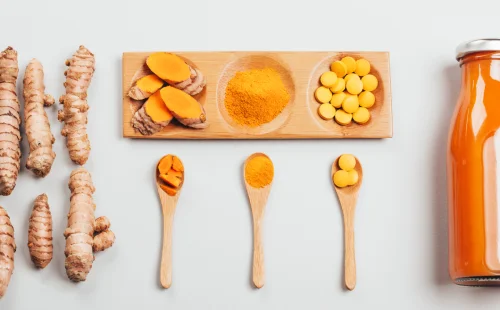
How does Turmeric work?
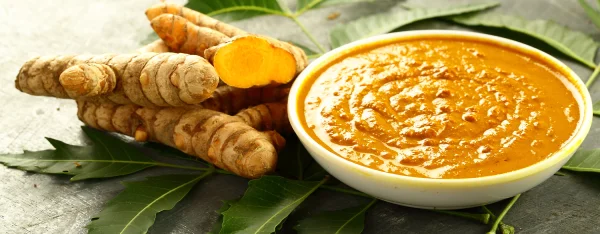
- Its Anti-Inflammatory nature helps fight off harmful intruders like bacteria, viruses, and injuries and repairs damage caused by them.
- It is full of antioxidants that help to manage free radicals in the body, which can lower the chances of cardiovascular disease, manage cholesterol & triglycerides, and may improve blood pressure as well.
- Curcumin found in Turmeric is considered suitable for brain health. It may act as a neuroprotective agent, which is beneficial in treating Alzheimer’s.
- It can prevent the growth of acne-causing bacteria, and significantly reduce its effects, and works wonders for your skin.
- Turmeric might help in managing diabetes by lowering blood glucose and improving insulin levels.
- It is proven beneficial in improving the metabolism rate for faster calorie burn.
What are the properties of Turmeric?
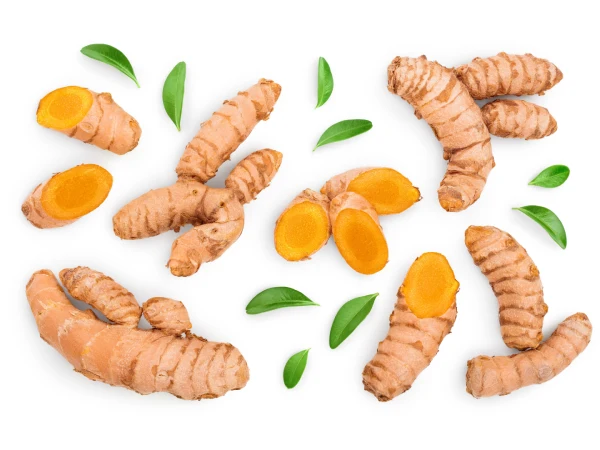
Are Turmeric and Curcumin the same thing?
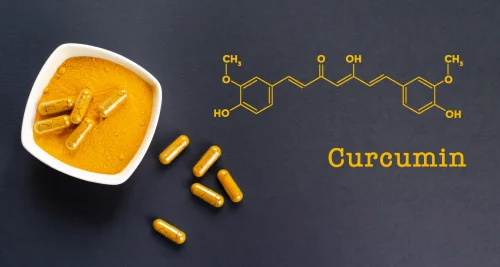
Turmeric is a strongly flavored spice extracted from the rhizomes, or roots, of the Curcuma longa plant that is cultivated majorly in India and Southeast Asia. This bright yellow spice is often used in curry dishes in Southeast Asian cooking and is also known for its various health benefits.
While Turmeric contains various plant chemicals, Curcumin is responsible for the majority of its health benefits. Curcumin is the primary active component in Turmeric, and it belongs to a group of plant compounds called curcuminoids. Curcumin is majorly responsible for Turmeric’s striking yellow color. But Curcumin makes up only about 2 to 8% of the Turmeric and is responsible for most of its benefits.
Why Turmeric is Yellow in Color?
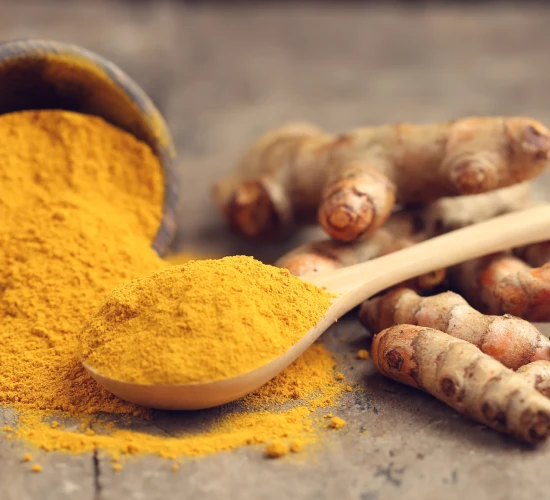
Why Turmeric and Black Pepper?
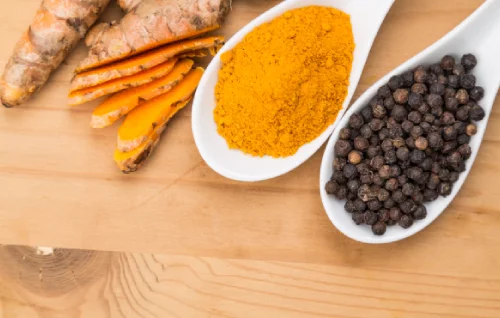
What Turmeric and Ginger are good for?

What is Turmeric good for?

- Promotes digestive process.
- It helps in strengthening the immune system.
- Nourishes the heart and circulatory system
- It helps in regulating healthy blood sugar levels.
- Sustain comfortable joint movement.
- Aids in promoting brain and nervous system.
- Turmeric milk has been used as a remedy for centuries to treat cold symptoms.
- Turmeric juice is often used to promote healing wounds, bruises, and leech bites.
- In ancient India, a paste made from Turmeric, lime, and salt was commonly used as a remedy to treat sprains and inflamed joints,
- It is a common practice to inhale fumes of burning Turmeric to get instant relief from congestion.
- A paste made of turmeric and neem leaves is said to help treat itching, eczema, and any other parasitic skin condition.
What are the health benefits of Turmeric?

1. Turmeric Is Natural Anti-Inflammatory
2. May Help Ease Symptoms of Arthritis
3. May Help Protect Against Heart Disease

4. May Help Prevent or Control Diabetes
5. It helps to improve Gut health
6. Can be Used in Treatment for Depression
7. May Help Prevent (and Possibly Treat) Certain Types of Cancer
8. Help Delay or Ease Symptoms Alzheimer’s Disease
9. Can Help to Treat and Improve Skin Health
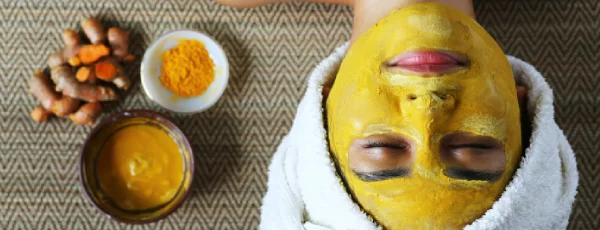
10. It helps in reducing inflammation of the gums.
Can Turmeric cause Constipation?
Can Turmeric lower Blood Pressure?
Can Turmeric cause Diarrhea?
Can Turmeric cause Bloating?
Can Turmeric Cause Urinary Problems?
- Urge to urinate very often.
- Feeling a burning sensation when urinating.
- Feel feverish at times which can cause a considerable amount of pain and irritation.
Can Turmeric Upset your Stomach?
Will Turmeric Lower Cholesterol?
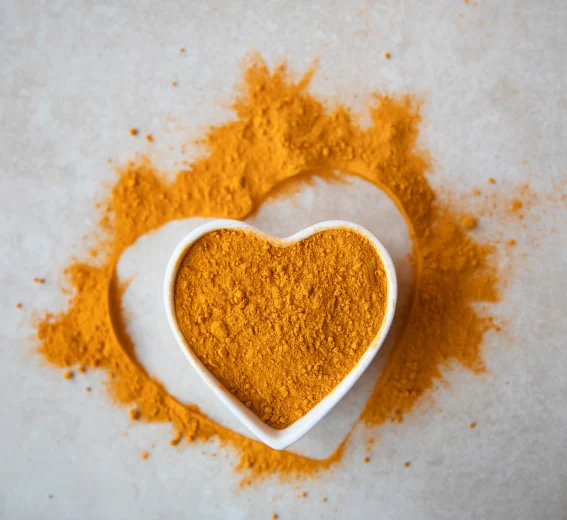
Can Turmeric Help with Weight Loss?
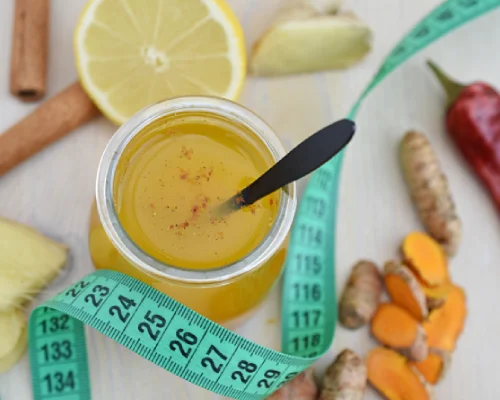
- Reducing the inflammation that plays a vital role in obesity.
- Helps suppress fat tissue growth.
- Increases metabolism rate for faster calorie burn.
- Regulates sugar levels and prevents insulin resistance.
- Subdue inflammatory triggers.
Will Turmeric Help in Joint Pain?
How Turmeric is Good for Skin?

- It can bring a natural glow.
- It helps to heal the wound and reduce skin inflammation.
- It improves tissue and collagen generation.
- It aids in soothing symptoms of Psoriasis.
- It reduces acne breakouts and acne scarring.
- Turmeric and neem are used in treating skin rashes and scabies.
What Turmeric Does to your Skin?
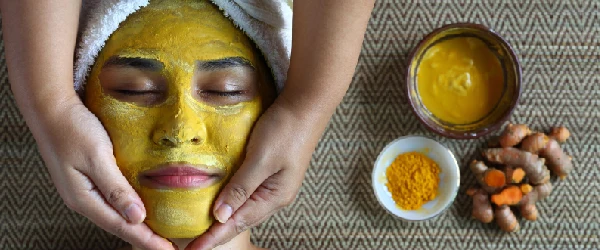
- It minimizes wrinkles and delays the aging process of the skin.
- It evens out discolorations on the skin.
- It aids in the lightening of dark circles.
- It also promotes the circulation of blood.
- It helps to prevent pimples and outbreaks.
- It Improves the elasticity of your skin.
- It is also known to lessen the growth of facial hair.
- It lowers the redness and puffiness of the blemish.
- It promotes the regulation of sebum production.
- It reduces puffiness because of inflammation.
- It supports the recovery and prevention of dry skin.
Which Turmeric is Good for Face?

- Enhancing your complexion.
- Aids in the prevention of acne.
- It helps to get rid of greasy skin.
- Aiding to get rid of dark circles.
- Helping in reducing facial hair.
- Improving your skin to look younger and supple.
Will Turmeric Stain my Skin?
Always test a patch of Turmeric on a small area to know if you are allergic to it or not.

Will Turmeric Stain my Teeth?
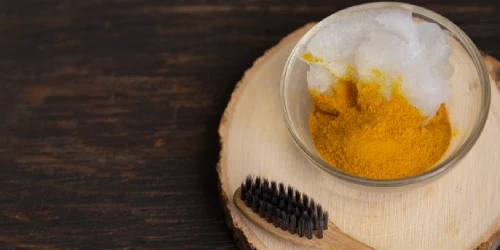
Are Turmeric Supplements Safe?
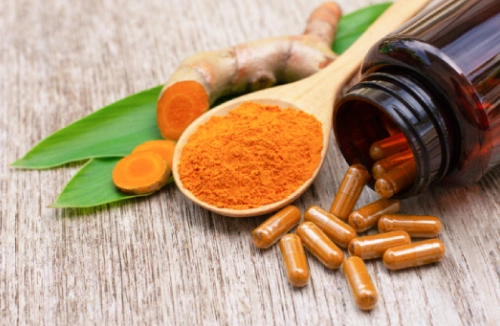
Which Turmeric Supplement is Best?

Which Turmeric Tablets are best for Arthritis?

What are the side effects of Turmeric?
- Turmeric is likely unsafe for pregnant women when taken by mouth in medicinal quantity.
- Not recommended to some with gallstones or a bile duct obstruction.
- People with severe liver diseases should avoid intake of Curcumin.
- Patients with a bleeding disorder should avoid taking Turmeric as it might slow blood clotting.
How Turmeric is used as Indicator?
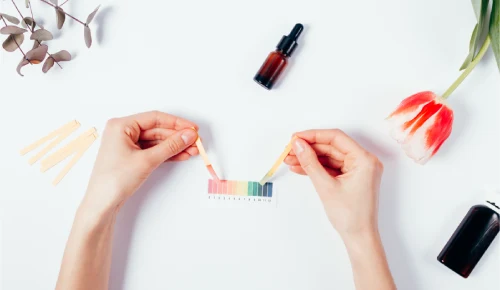
Why does Turmeric turn Red?
Homemade herb cheese spread
This cheese spread is a homemade version of a store-bought cheese spread. It is light, creamy, and can be modified to include your favorite herbs and spices. You can choose to use the low-fat versions of the dairy ingredients to make it healthy. You can use this cheese spread for toast, crackers, or as a dip
Good for Vata Dosha
Prep Time: 5 minutes
Total Time: 30 Minutes
Serves: 2 Cup
Ingredients
Method
- Heat the milk in a clean container.
- As it nears the boiling point, add vinegar/lemon juice and turn off the heat. Let the milk solids separate.
- Strain the milk in the cheesecloth and allow it to drain for 30 mins.
- In a mixing bowl, combine the greek yogurt with herbs. Add the drained milk cheese and mix well.
- Add salt, combine and serve.
Notes
The strained liquid is called whey and is highly nutritious. It can be used to knead chapati dough or can be added in dals or soups.
Check out the Ayurvedic benefits of ingredients used in this recipe
Peppercorn Milk
This peppercorn milk recipe is useful for a person with high-Kapha dosha and is an excellent remedy for cough, cold, and throat infection.
Good for Kapha Dosha
Prep Time: 2 minutes
Total Time: 10 Minutes
Serves: 1 Cup
Ingredients
- ½ t coarsely ground peppercorns
- 1 cup whole milk (preferably Cow’s milk)
- ¼ cup water
- 1 t honey / maple syrup (optional)
Method
- Add milk, water, and peppercorns in a saucepan and bring it to a boil over high flame.
- Reduce the heat to medium flame and let it simmer until 1 cup of liquid is left.
- Add Honey/Maple Syrup. Mix well, filter, and serve warm.
Check out the Ayurvedic benefits of ingredients used in this recipe
Pippali Milk
Milk acts as an anupan, or carrier substance, bringing the qualities of herbs deeper into the tissues and is a very effective way to take the herbs of your choice and enjoy their benefits. This pippali milk recipe is good for respiratory disorders like bronchitis and asthma and is effective for digestive disorders.
Good for Kapha Dosha
Prep Time: 2 minutes
Total Time: 10 Minutes
Serves: 1 Cup
Ingredients
- ½ t ground pippali
- 1 cup whole milk (preferably Cow’s milk)
- 1 t honey/maple syrup (optional)
- ¼ cup water
Method
- Add milk, water, and ground pippali in a saucepan and bring it to a boil over high flame.
- Reduce the heat to medium flame and let it simmer until 1 cup of liquid is left.
- Add honey/maple syrup. Mix well and serve warm.
Check out the Ayurvedic benefits of ingredients used in this recipe
Ginger Powder Milk
Milk acts as an anupan, or carrier substance, bringing the qualities of herbs deeper into the tissues and is a very effective way to take the herbs of your choice and enjoy their benefits. This ginger milk is good for people suffering from constipation, chronic indigestion, and Kapha-Vata respiratory illnesses like cough and sore throat.
Good for Kapha and Vata Dosha
Prep Time: 2 minutes
Total Time: 10 Minutes
Serves: 1 Cup
Ingredients
- ½ t dry ginger powder
- 1 cup whole milk (preferably Cow’s milk)
- 1 t Honey or maple syrup (optional)
- ¼ cup water
Method
- Add milk, water, and ginger powder in a saucepan and bring it to a boil over high flame.
- Reduce the heat to medium flame and let it simmer until 1 cup of liquid is left.
- Add honey/maple syrup. Mix well and serve warm.
Check out the Ayurvedic benefits of ingredients used in this recipe
Vegan Chocolate Pudding
The best part of this pudding is that it doesn’t need to be cooked, baked, or chopped. That’s why it is a favorite dessert for summer. Dark chocolate acts as a mood booster and this pudding is perfect for those gloomy evenings. To enhance the taste, you can garnish this pudding with berries or mint.
Prep Time: 5 minutes
Total Time: 5 Minutes
Serves: 2 Person
Ingredients
- ½ slab of dark chocolate compound
- 1 ripe avocado
- 1 t vanilla extract
- ½ T coconut oil
- A large pinch of your favorite spice (eg. cardamom, cinnamon, clove, or star anise)
- 1 T maple syrup
- A pinch of salt (preferably Himalayan salt)
Method
- Spoon out the avocado and place it in an electric mixer.
- In a double boiler, melt the chocolate compound and add coconut oil. Mix, till it forms a smooth paste
- Start the electric mixer with avocado and slowly add a drizzle of melted chocolate
- Keep mixing till it all the chocolate is added to the mixer and it has a thick flowy consistency
- Add vanilla extract, maple syrup and spices. Mix well
- Portion out in serving glasses and refrigerate for 4 hours
- Serve chilled with your favorite topping like berries or mint.
Notes
Check out the Ayurvedic benefits of ingredients used in this recipe
Cardamom | Cinnamon | Clove | Star Anise | Salt
- Go to page 1
- Go to page 2
- Go to page 3
- Interim pages omitted …
- Go to page 8
- Go to Next Page »
